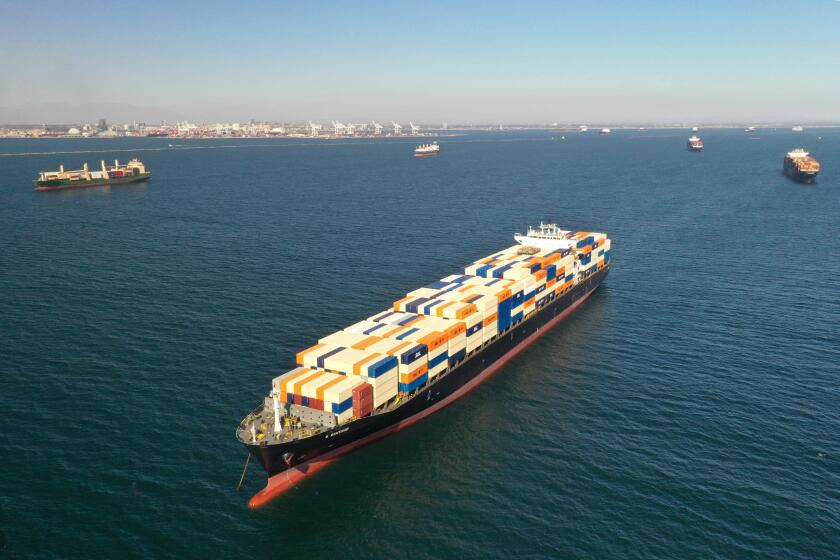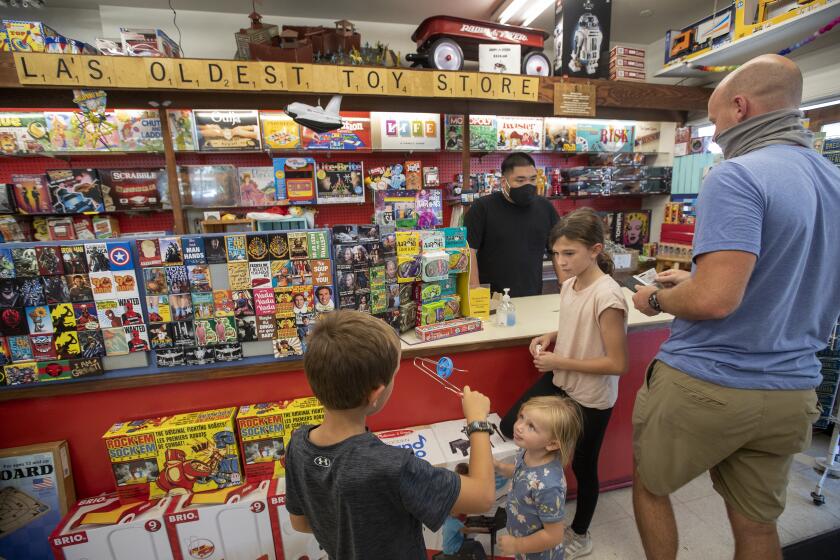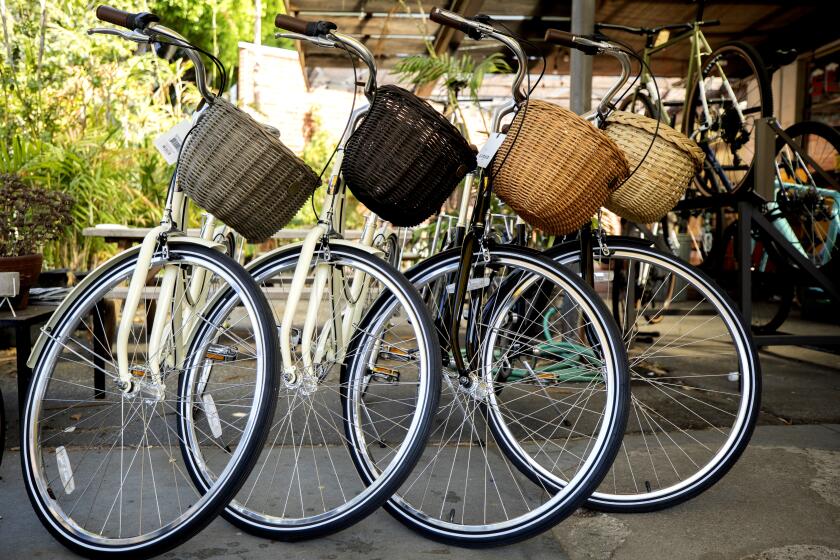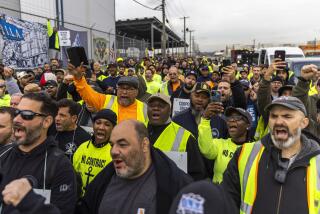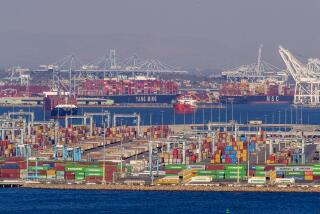When will supply chains be back to normal? And how did things get so bad?
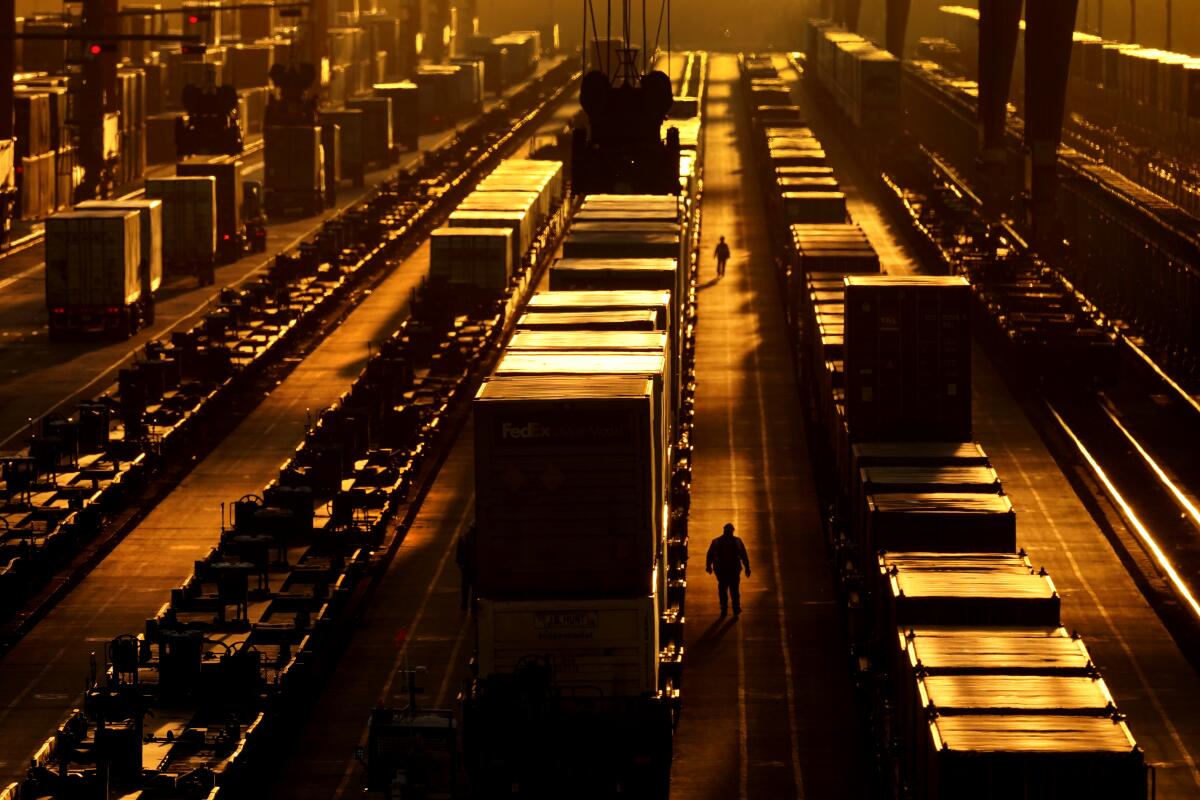
- Share via
Wondering why everything from cars and refrigerators to books and toys is in short supply?
Blame the fouled-up supply chain that connects manufacturers around the world with the makers and assemblers of their component parts, as well as with the consumers and businesses that buy the finished goods. The problem emerged shortly after the COVID-19 pandemic struck, and it’s seemed to get only worse since then.
How did we get into this mess? And why isn’t it getting better? The Times reached out to some supply chain experts, and here are their answers.
What, exactly, is ‘the supply chain’?
Manufacturers in the U.S. and the rest of the industrialized world have long outsourced the production of common and low-cost products to China and other low-wage countries. But starting in the 1970s, companies outsourced the production of an increasing number of more sophisticated products, often using multiple contractors to produce and then assemble the components.
Here’s how it typically works: A company based in the U.S. will design and put the finishing touches on a product but will turn to one or more foreign manufacturers for raw materials and components if that will significantly cut the cost to build and deliver it. For example, according to the American University Auto Index, roughly half of each Dodge Ram 1500 truck that rolled out of a U.S. auto plant last year came from outside the U.S. and Canada.
A global supply chain breakdown has resulted in gridlock at the ports of Los Angeles and Long Beach and beyond.
Some companies forgo having U.S. factories altogether, using contractors to assemble their products from the pieces made by subcontractors. With or without a U.S. plant, a company that relies on a far-flung supply chain requires some combination of planes, ships, trucks and warehouses to pull its products together and store the inventory.
Global supply chains are especially prevalent in durable goods (such as cars and appliances), tech products (such as cellphones and computers), clothing, footwear, textiles, furniture and plastic goods. And although most U.S. imports come from China, Mexico and Canada are also important links in the supply chain here, as are a number of Asian and European countries.
What caused the problem?
In a word, COVID-19. The pandemic whirled up a toxic brew of forces that triggered and then exacerbated the shipping logjam.
The first blow came when many of the Chinese plants that build parts or assemble goods for global manufacturers were shut down by coronavirus outbreaks. Similar disruptions soon spread across the globe, affecting both manufacturers and the logistics companies that ship, store and deliver their goods.
After a brief COVID-related recession, however, demand for goods grew quickly, as people shifted to online buying and took up new habits (a surge in home-improvement projects, for example, boosted demand for appliances and construction materials).
The owner of Kip’s Toyland thinks he’s outsmarted the global supply chain gridlock that is threatening the holiday shopping season.
Manufacturers face a “perfect storm” of issues, said Nick Vyas, executive director of the Kendrick Global Supply Chain Institute at the USC Marshall School of Business.
Labor, transportation and logistics costs are up, there’s reduced capacity because of the problems all along the supply chain, and there’s a finite amount of resources across the board, including the number of containers and amount of manufacturing capacity.
“We might be able to buffer against one type of risk or two types of risk, but it’s the fact that all these challenges are happening at the same time,” said Nicole DeHoratius, an adjunct professor of operations management at the University of Chicago’s Booth School of Business.
The pandemic is not entirely to blame. Robert Handfield, the Bank of America professor of supply chain management at North Carolina State University, said that “warehouse, distribution and truck driver shortages were bad before COVID.”
The delays caused by the backlog in deliveries have been particularly disruptive to companies that operate with small inventories and rely on “just in time” shipments to fill orders. To avoid that pitfall, some companies are ordering extra supplies and components as a precaution, increasing the strain on the distribution system.
Another factor: Concerns about the spread of COVID-19 and its variants have made it harder for trucks to cross borders. A report Monday by Moody’s Analytics said the differences among countries’ efforts to control the coronavirus have gummed up the movement of transportation workers at ports and other freight hubs, contributing to a problem that will get worse before it gets better.
And it’s not easy to restart factories after they’ve been shut down to stem surges in coronavirus cases. Raw materials back up, and it can take weeks to restart production, Vyas said.
“The supply chain is a system,” he said. “When you create shocks from the supply to the demand side and that continues to happen, the system isn’t getting enough time to reset and recalibrate.”
Why are cargo ships waiting to be unloaded at the ports?
West Coast ports were barely keeping up with the growth in freight before the pandemic and had no ability to absorb disruption, said Ayman Omar, an associate professor at American University’s Kogod School of Business. The pandemic has only worsened the situation, including a shortage of trucks to haul cargo containers to their destinations.
There were 64 ships in a holding pattern near the ports of Los Angeles and Long Beach Thursday.
Some trucking industry executives blame higher federal unemployment benefits, which ended in September, for the driver shortage. Omar said that the benefits might have contributed to the problem in the early months of the pandemic, but the issue now is competition coming from transportation start-ups hungry for market share. Drivers come and go at trucking companies at an alarmingly high rate — turnover was more than 90% at large firms in the last quarter of 2020.
Without enough trucks to carry them off, containers piled up on docks, and more kept coming — each new ship brings in 10,000 to 21,000 containers. And with the ports of Los Angeles and Long Beach unable to handle the growing number of ships, vessels were spending about as much time waiting to anchor and unload — about two weeks — as it would take a ship to cross the Pacific, said Robert Khachatryan, chief executive of Freight Right Global Logistics of La Crescenta.
Compounding the problem is the lack of transparency and information sharing, which makes it impossible for the manufacturers and importers who rely on the ports to see problems developing in advance and route around them, Omar said.
Many items destined for retailer shelves this holiday season are hopelessly snarled in the global supply chain. What does that mean for shoppers?
How is this affecting me?
Prices are higher for many things. The shortages and the heavy demand for shipping have combined to cause freight costs to skyrocket; the cost to move a container from China to the U.S. West Coast is four times what it was a year ago, and more than 10 times what it was before the pandemic.
Manufacturers have passed their higher costs on to consumers, though that hasn’t seemed to stem the demand for goods, Vyas said. The increase is hitting not just the teak furniture you bought, imported from Indonesia, but also the running shoes and dress shirts you bought from a local retailer.
Goods are taking longer to arrive. Handfield said he realized this summer that he needed a new refrigerator, so he ordered one in August. It’s not due until December. Some retailers are urging consumers to buy their holiday gifts now, while there’s still plenty of time for them to be delivered.
Some items are becoming harder to find. Although we’re not seeing as many empty store shelves as we did in the early days of the pandemic, shortages are cropping up in unexpected places. For example, printers, game consoles and rental cars are harder to come by, all thanks to the semiconductor drought.
More price inflation is expected. “You have this constant pressure of not having enough resources, strong demand,” Vyas said.
How long will it last?
Experts say it will take a while — maybe six months, maybe more than a year — before the supply chain can work its way through the backlog.
“We have these orders coming in, we can’t work them off because we’re facing these labor shortages,” DeHoratius said. “Unless they stop coming in, it doesn’t allow us the time to get it through.”
Some companies have even tried to hedge their bets by placing multiple orders for the same products from different factories. But that still requires shipping capacity to get the products to store shelves on time.
How will this be resolved? Some economists argue that the convulsions in the shipping market will encourage U.S. manufacturers to shift more of their outsourced work from Asia to Mexico. But that’s a long-term fix. In the near term, experts say that repairing the supply chain will require addressing every part of it and not focusing on just one part of the process.
For example, factory employees who work on manufacturing and raw materials processing need to be vaccinated to stop outbreaks.
Ports need to expand hours so that more containers can be offloaded. The Biden administration announced a move in that direction Wednesday, saying the Port of Los Angeles would start operating around the clock, similar to moves made at the Port of Long Beach.
Vyas likened the supply chain to a symphony, in which every piece must play its position for the whole ensemble to be successful.
“We’re doing this in a silo — one touch point at a time — rather than as a system,” he said. “It needs to balance this out.”
More to Read
Inside the business of entertainment
The Wide Shot brings you news, analysis and insights on everything from streaming wars to production — and what it all means for the future.
You may occasionally receive promotional content from the Los Angeles Times.
